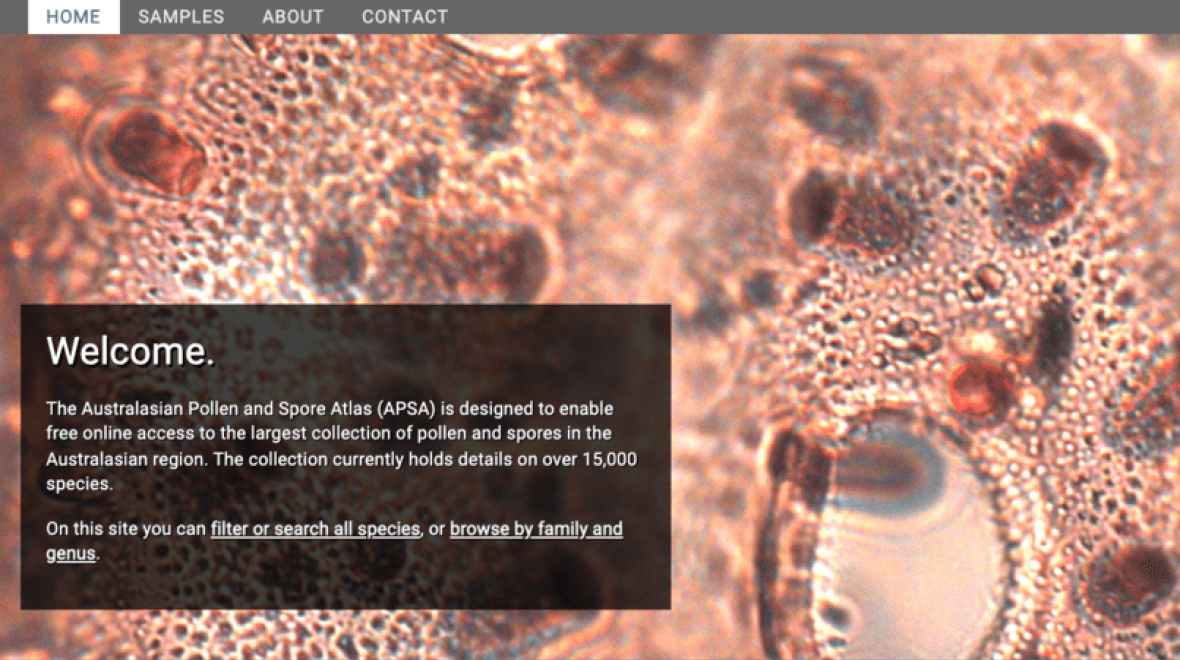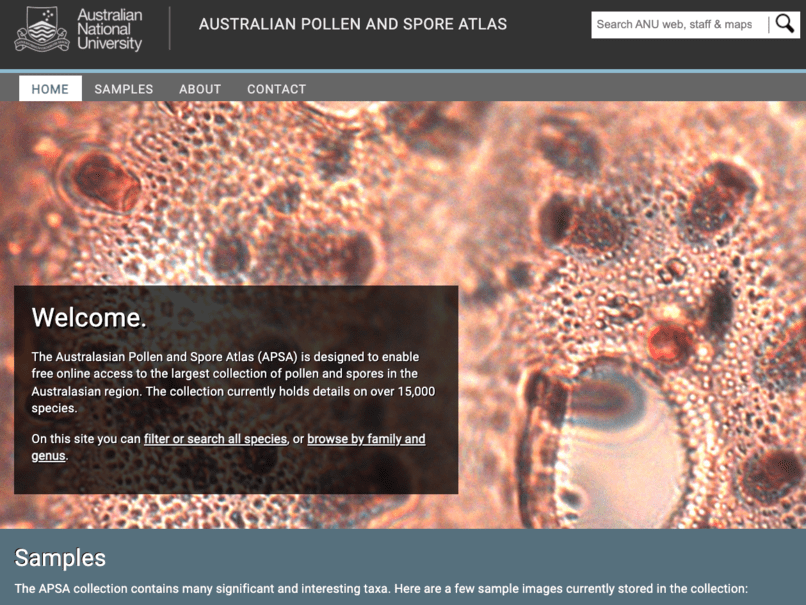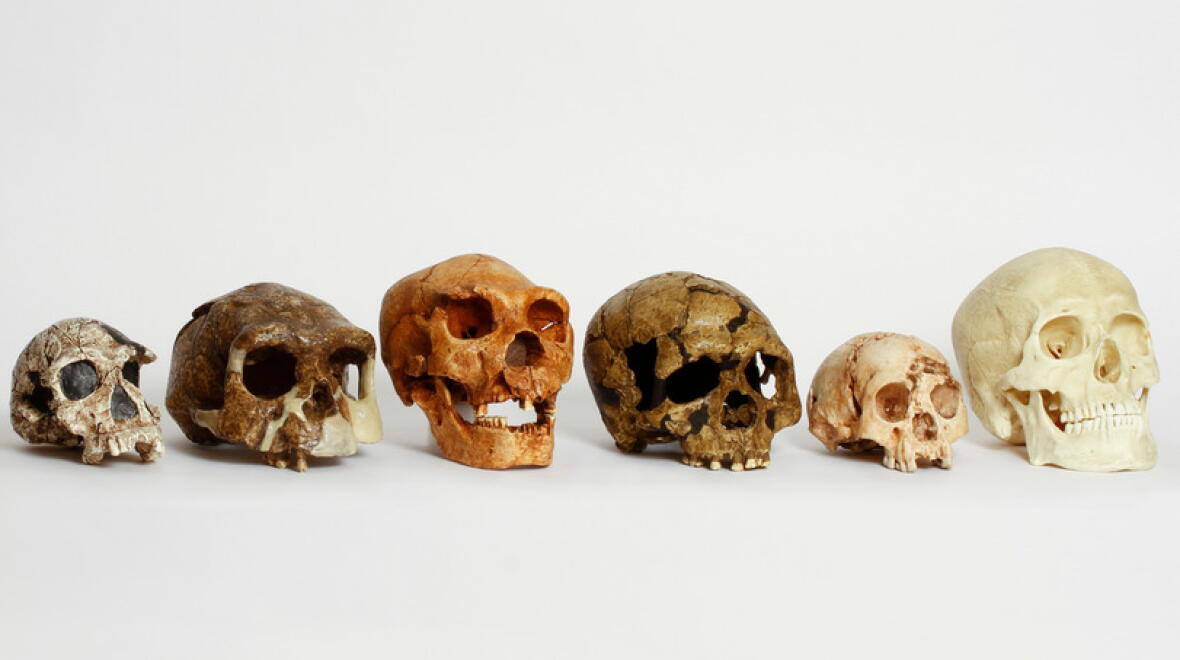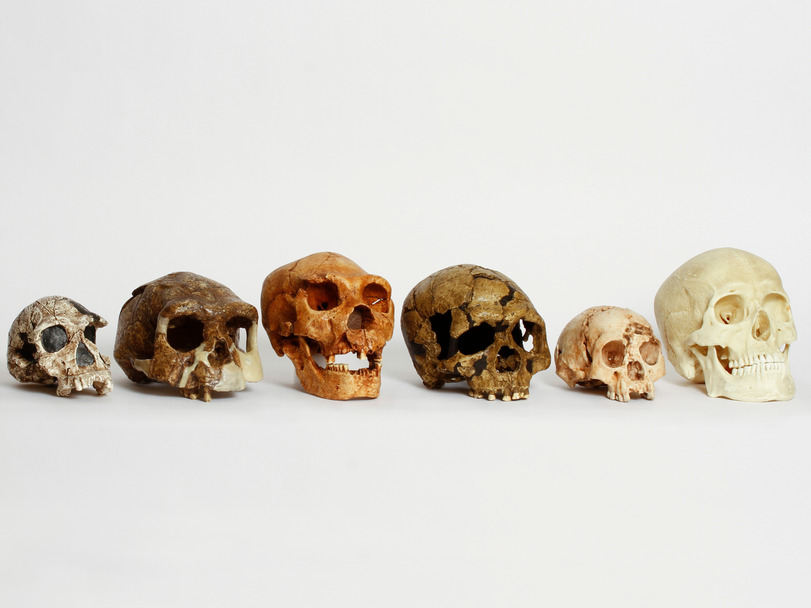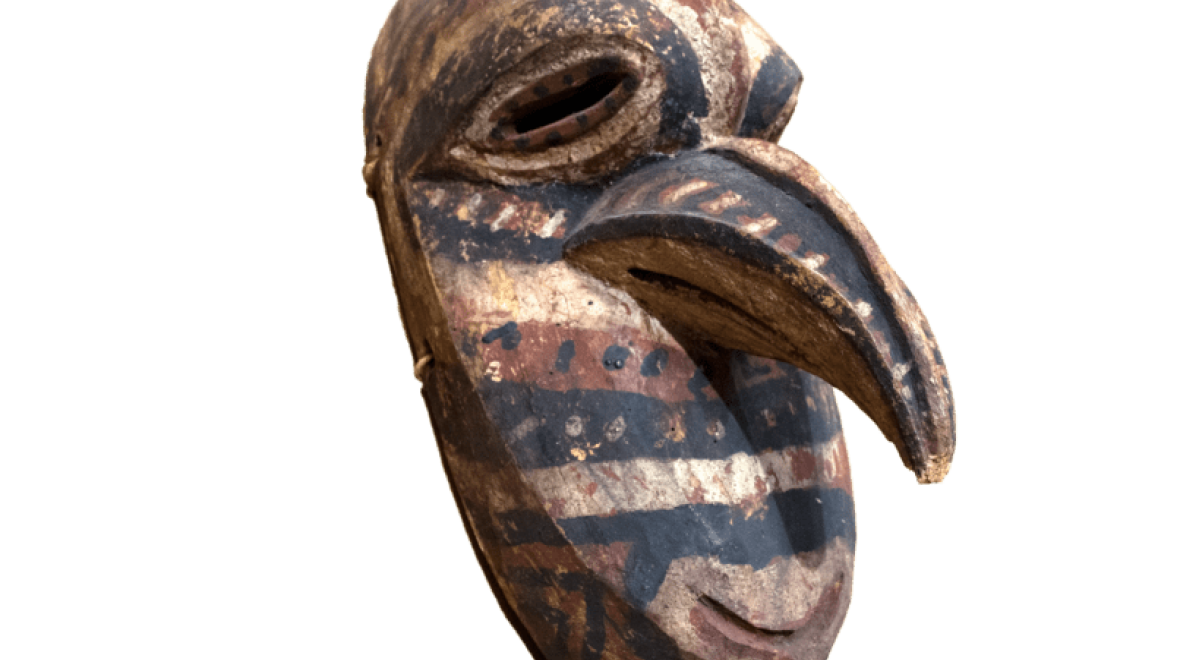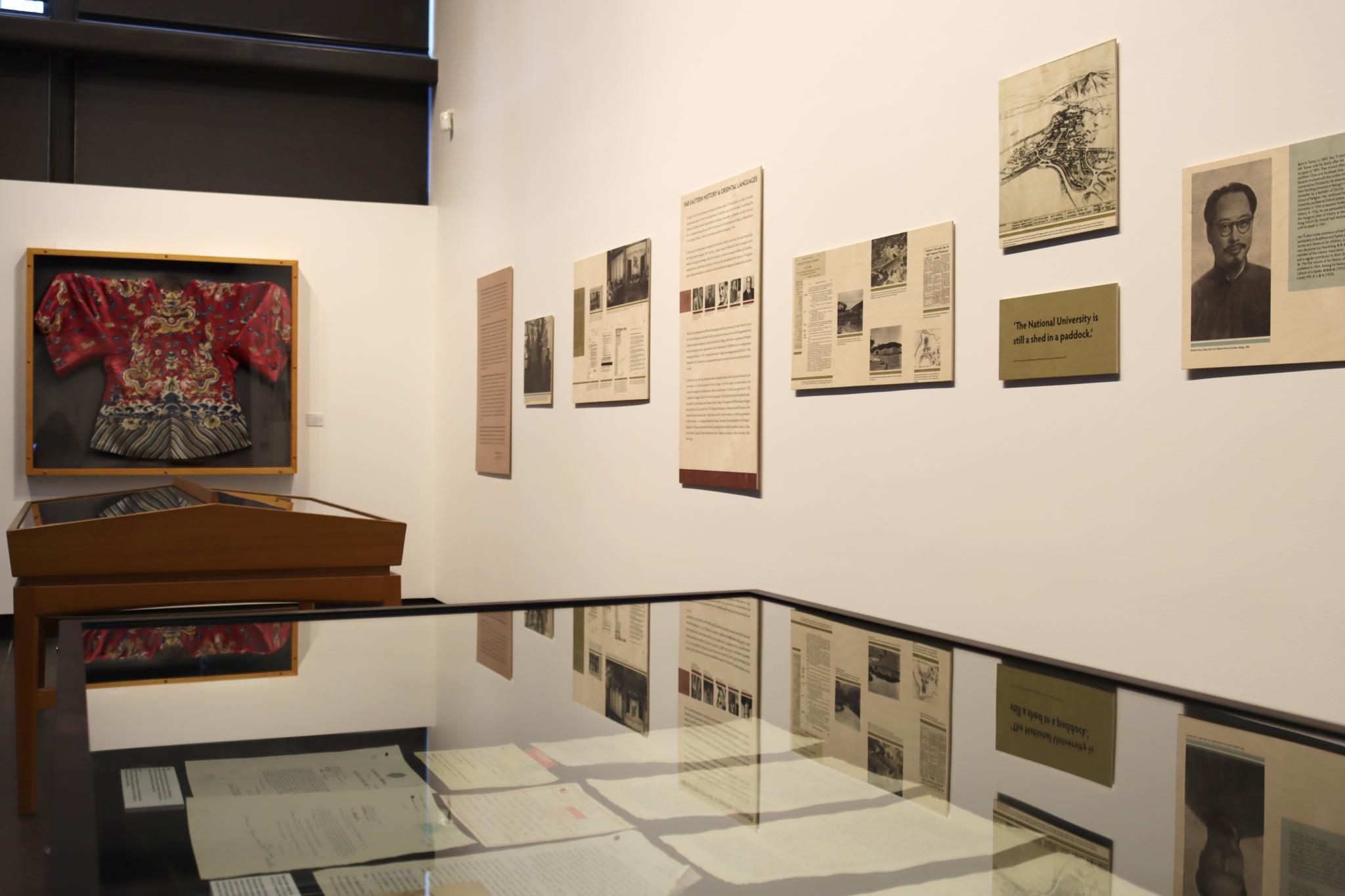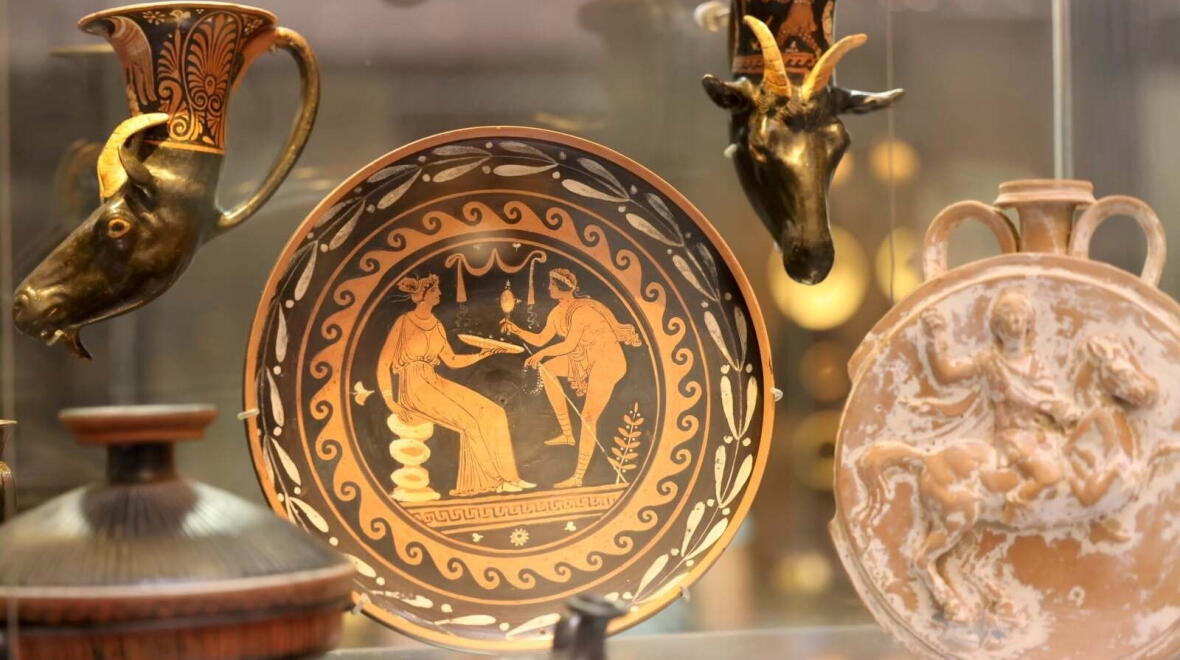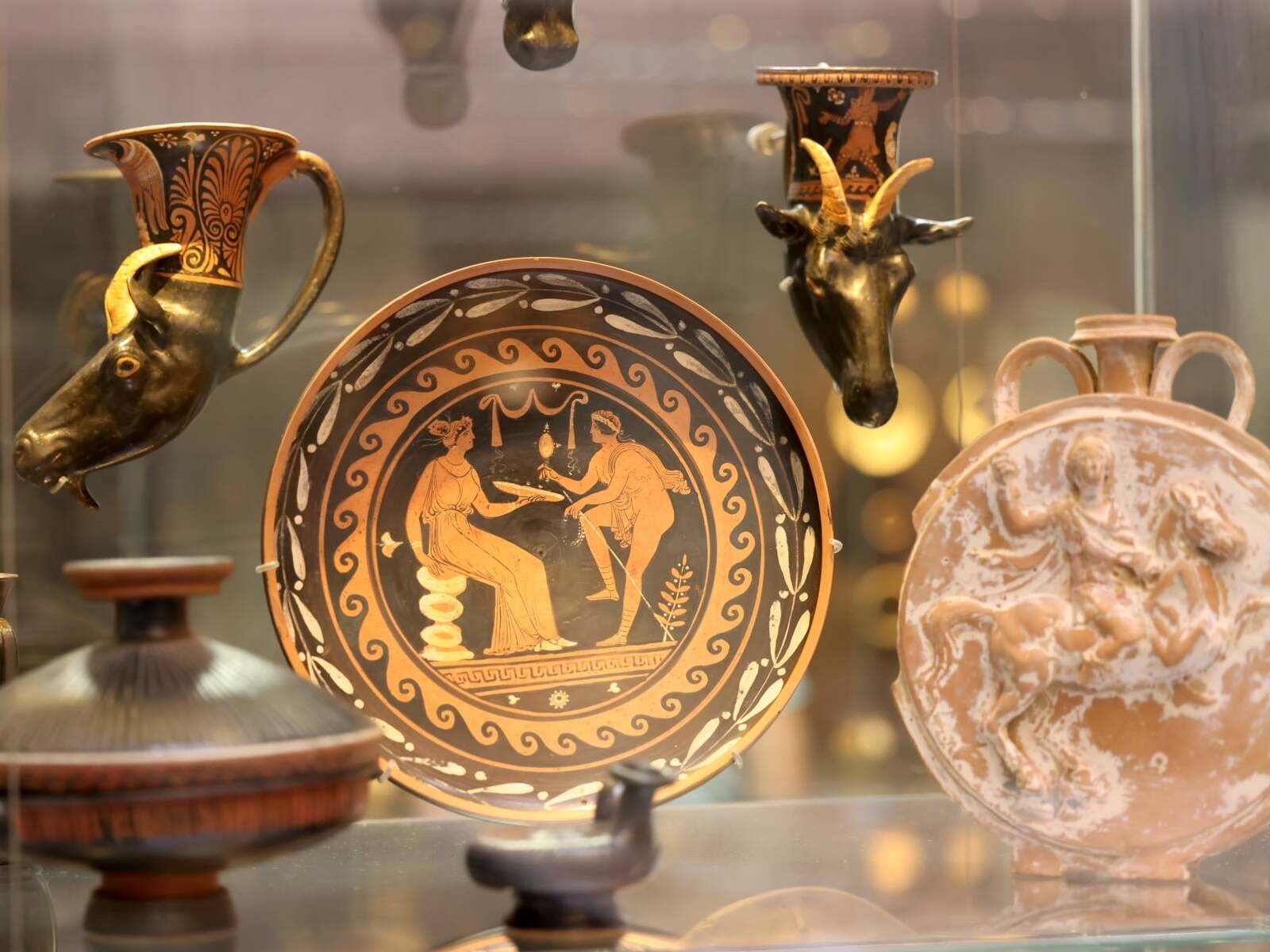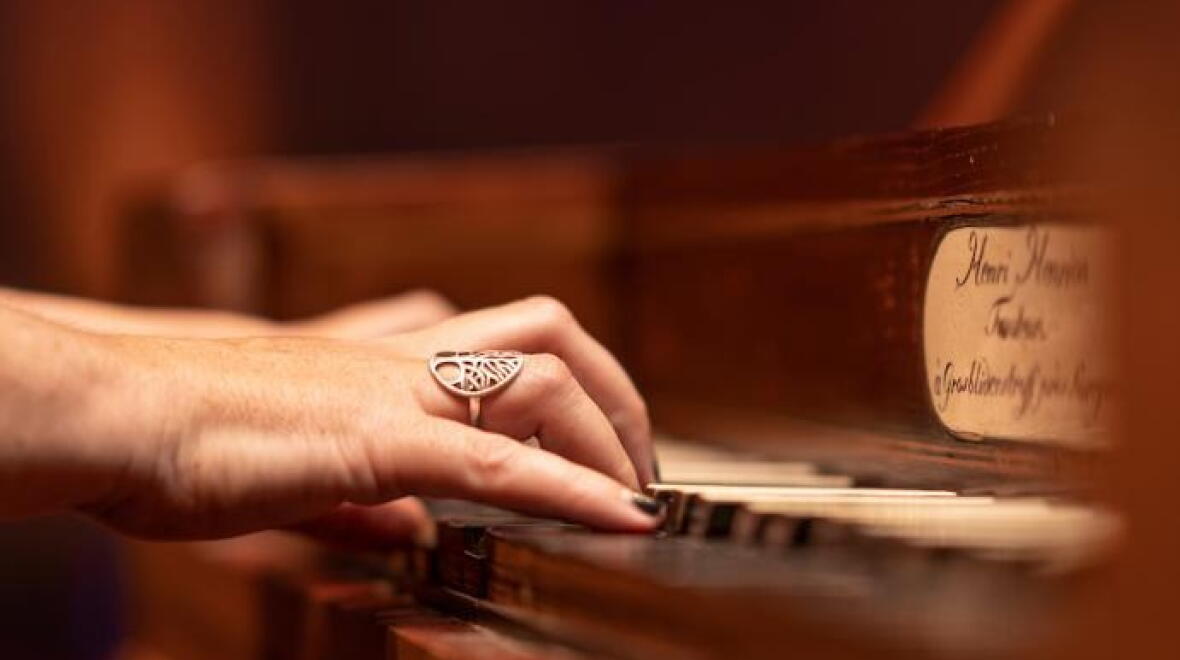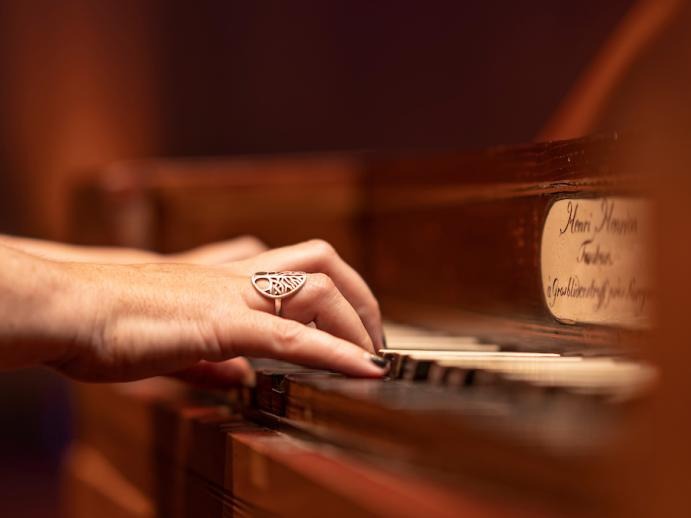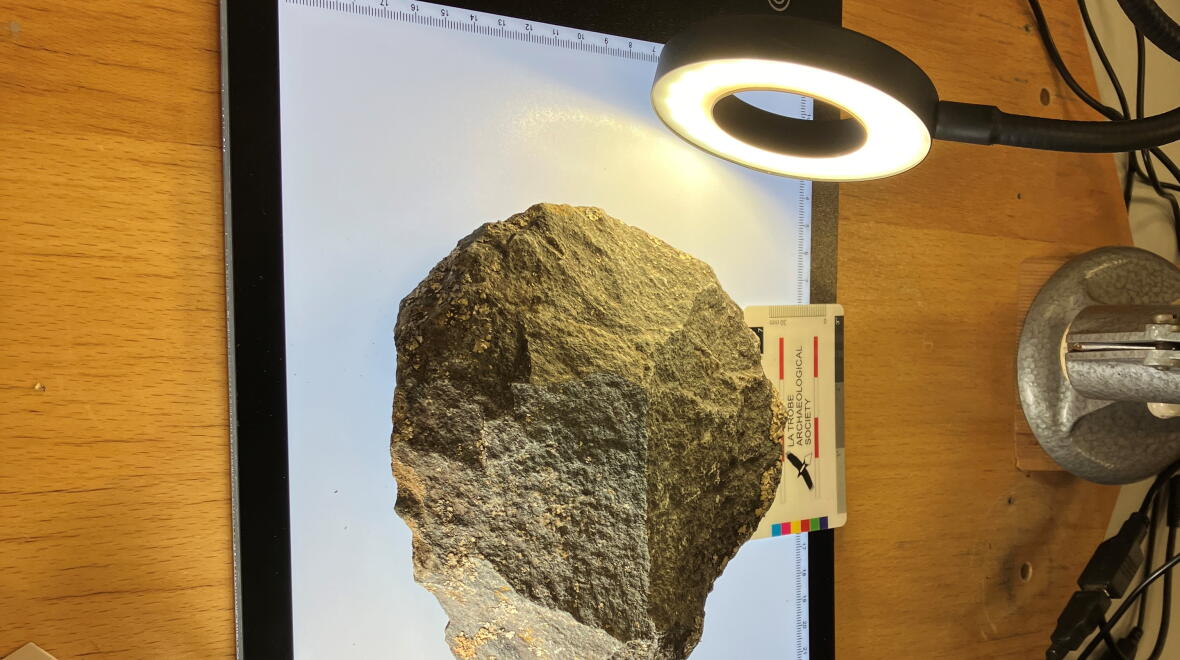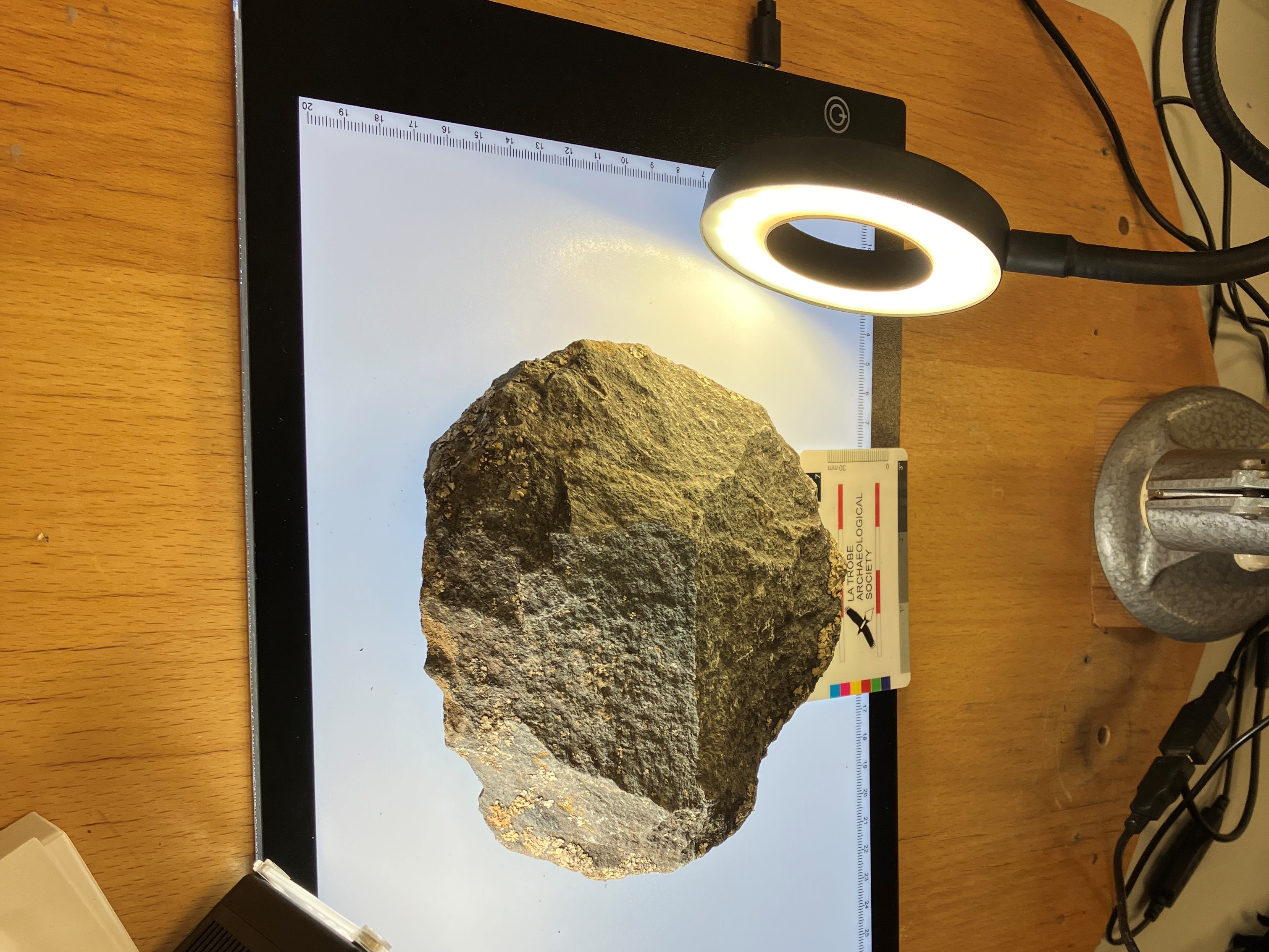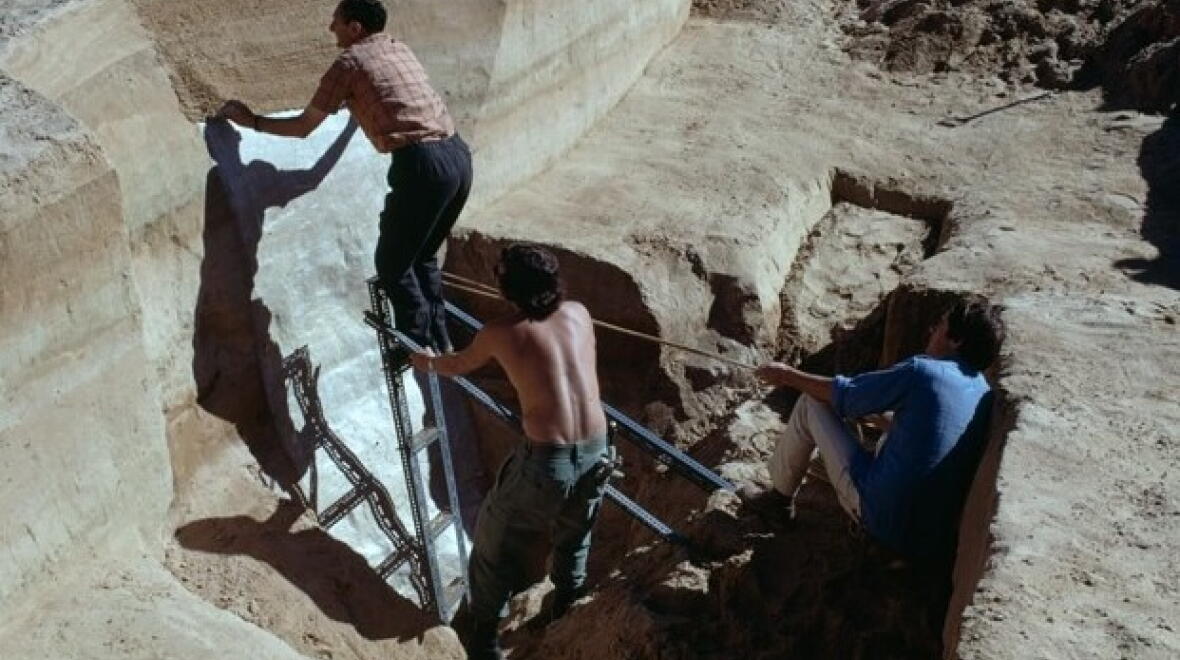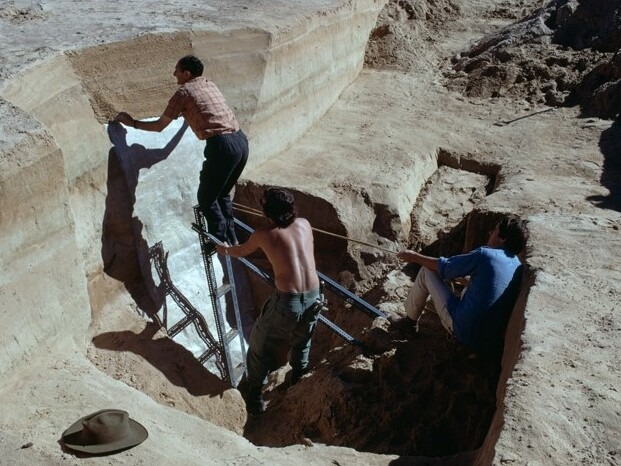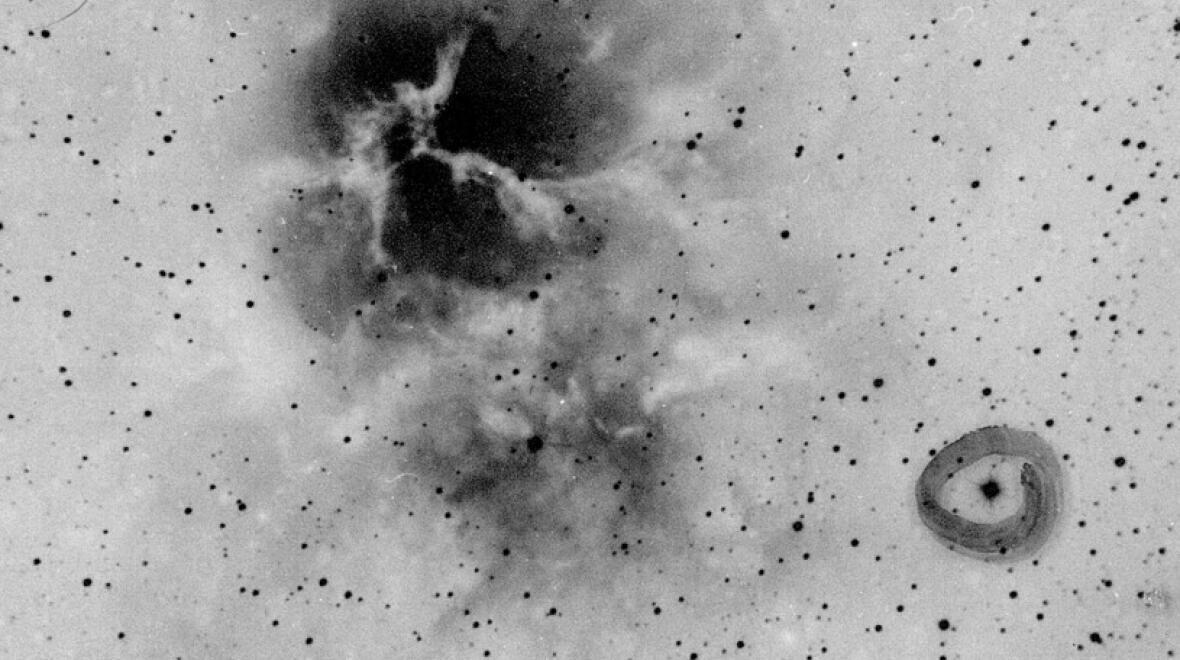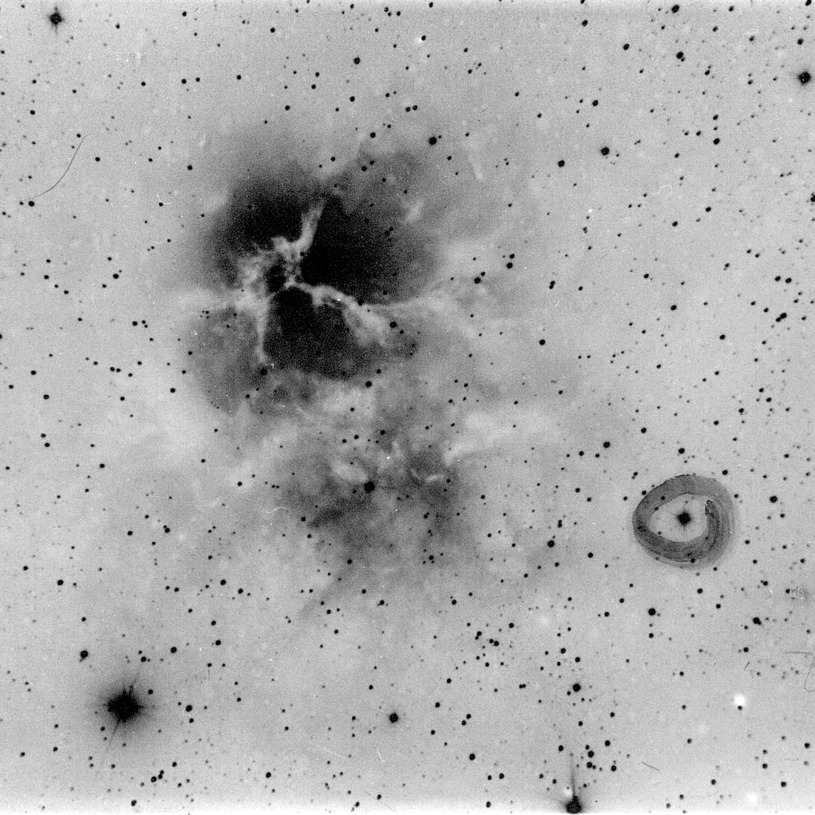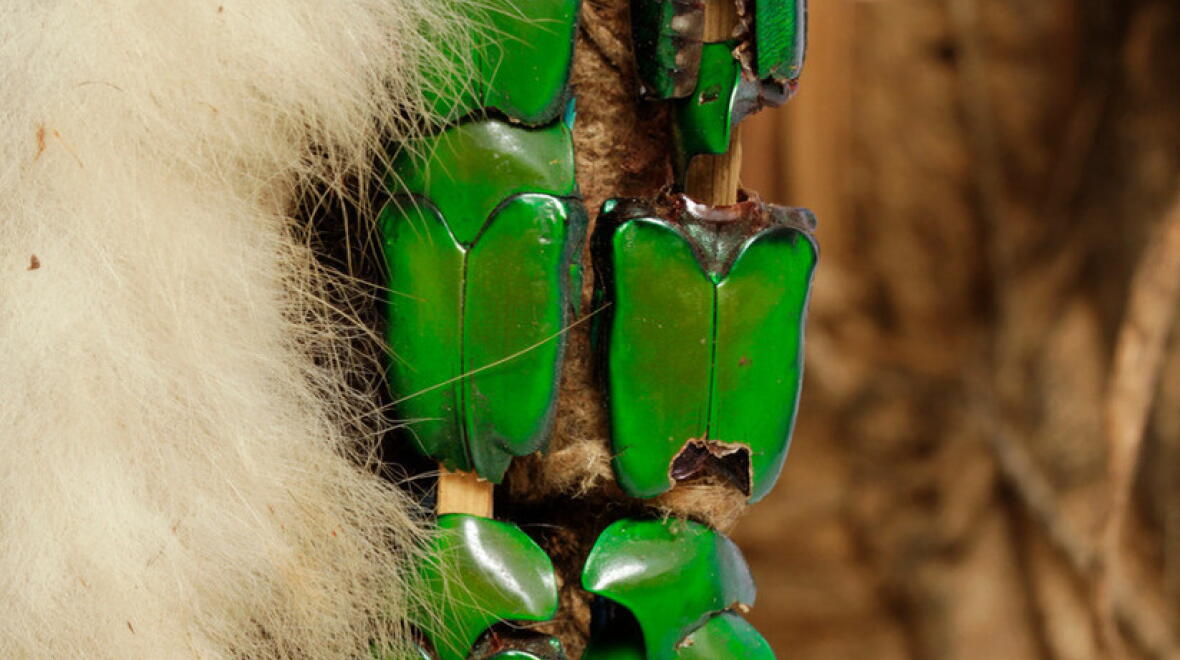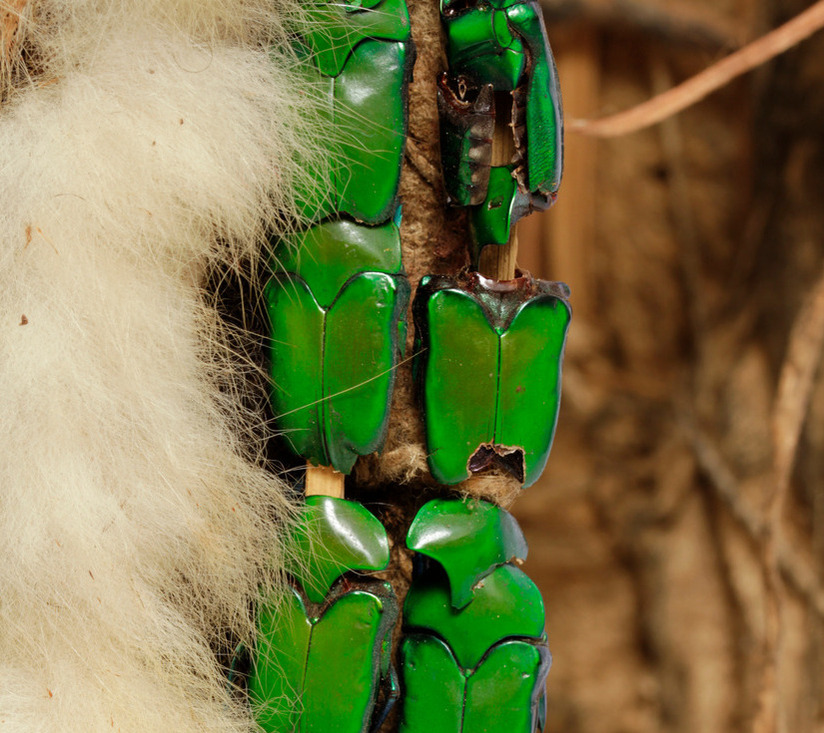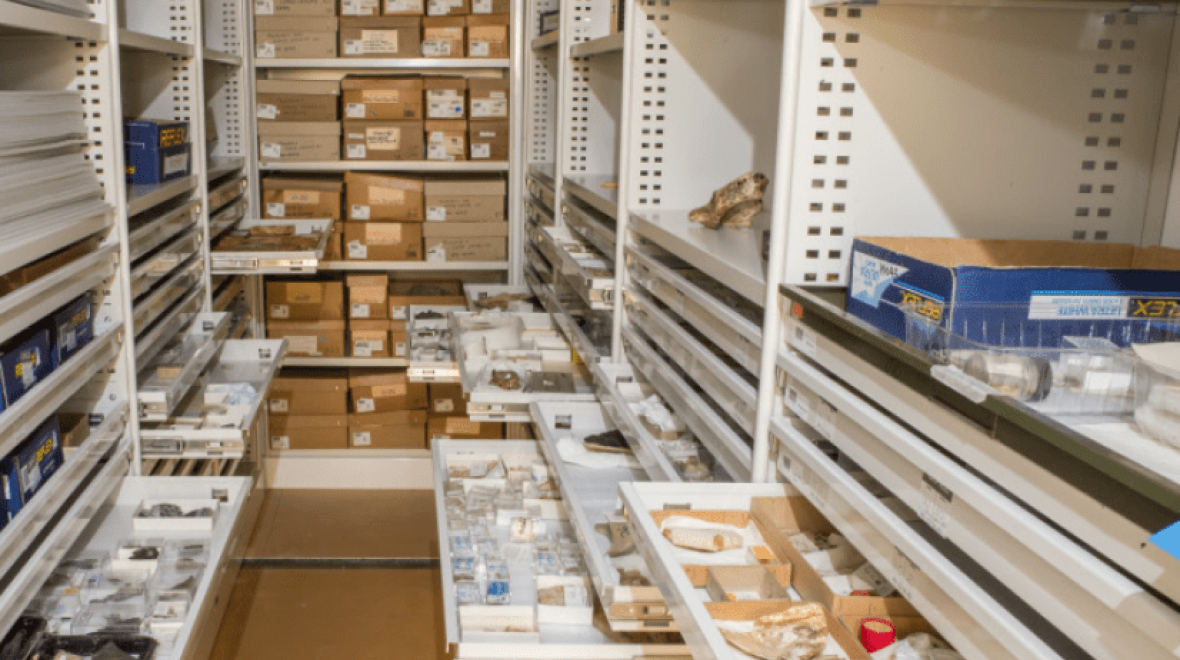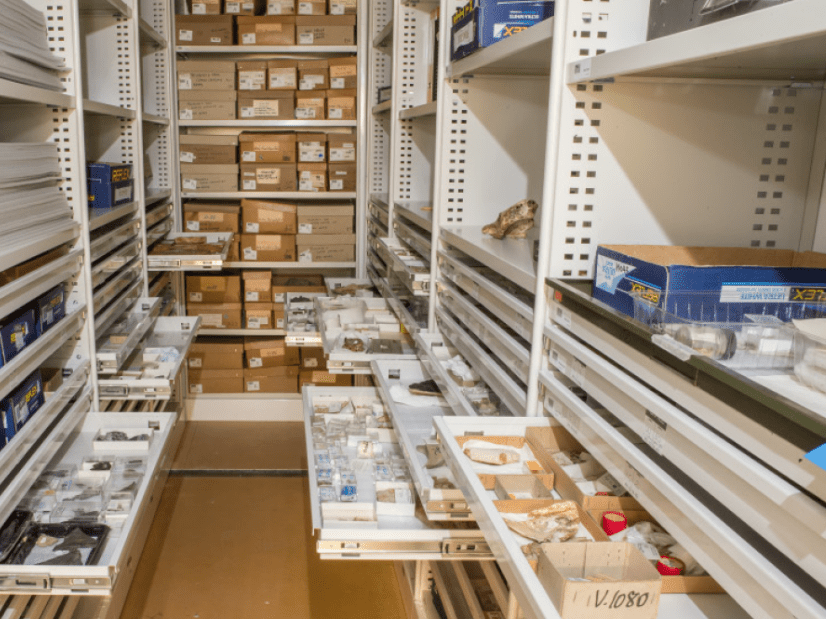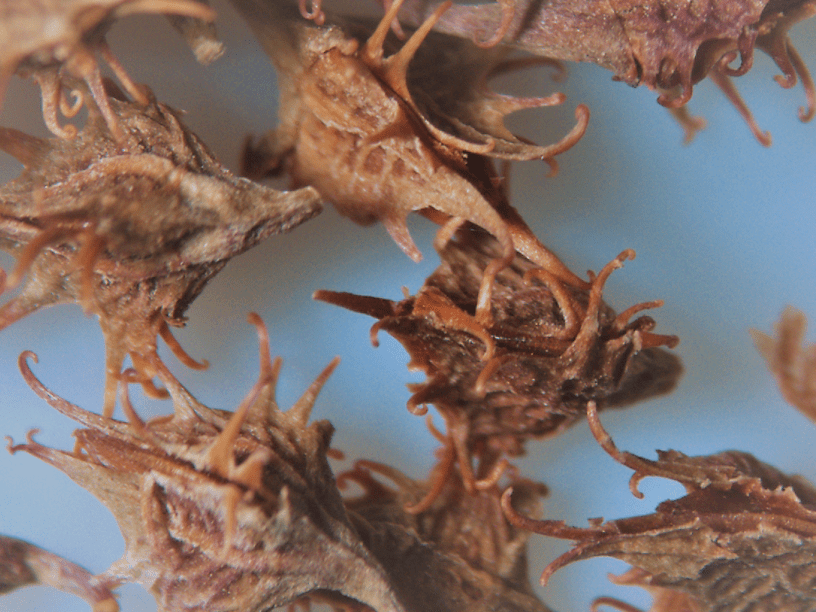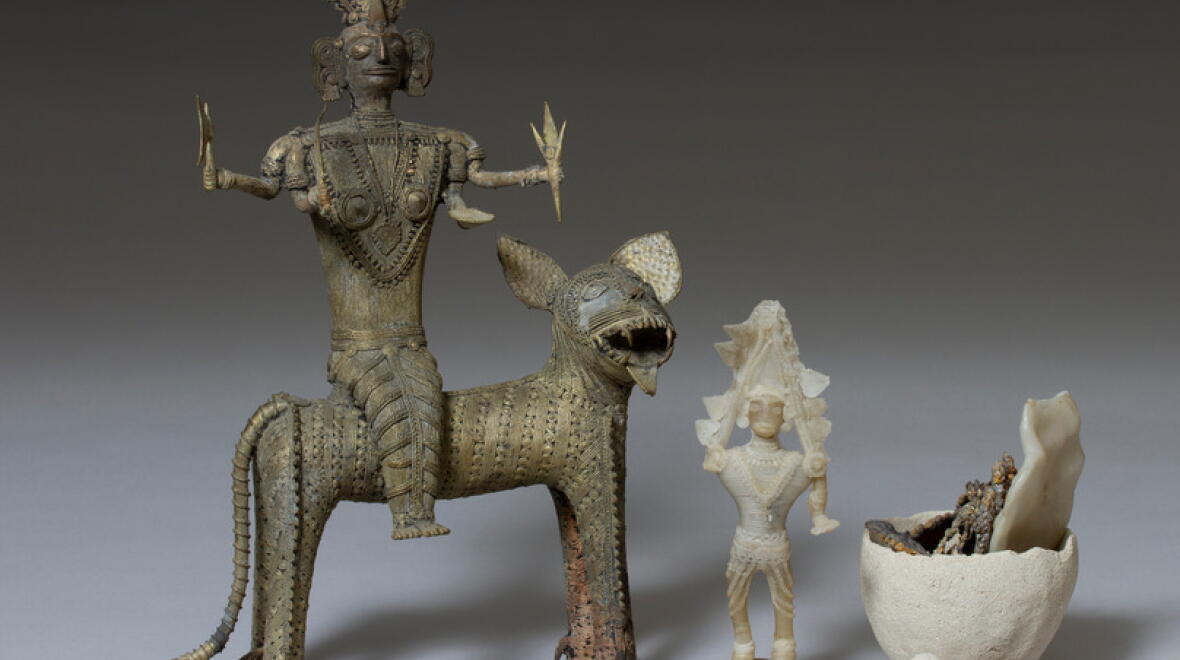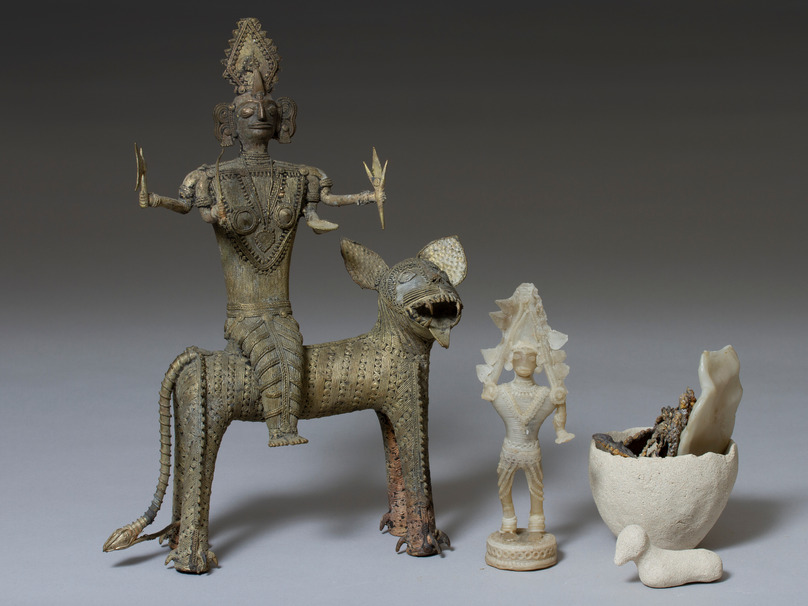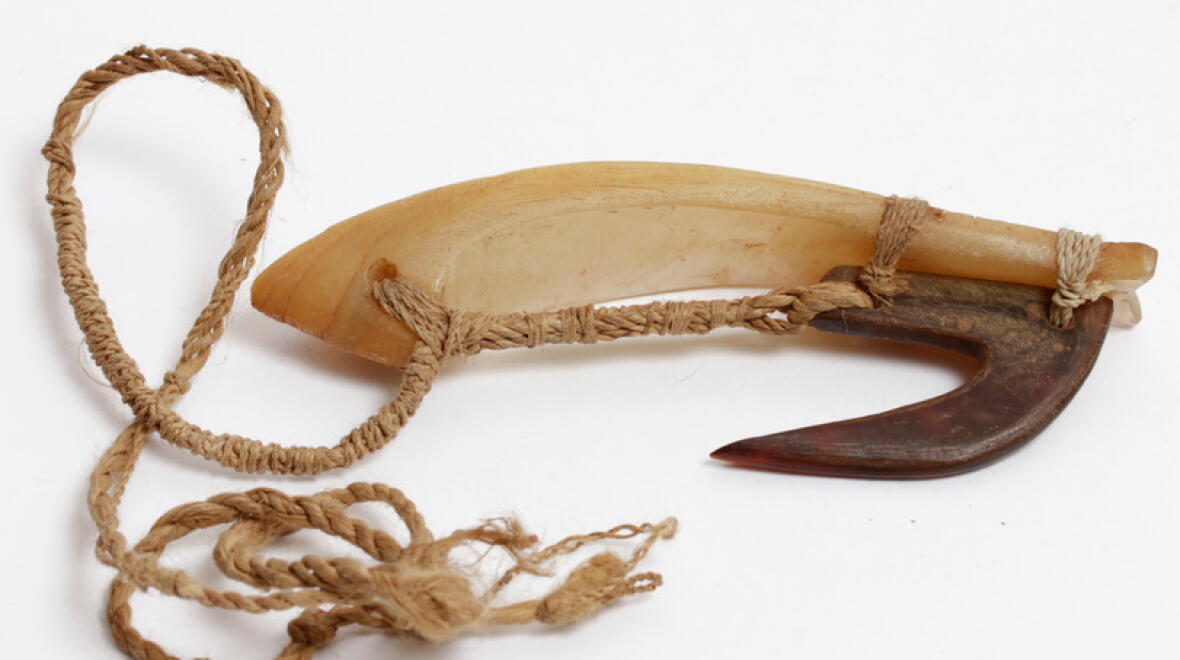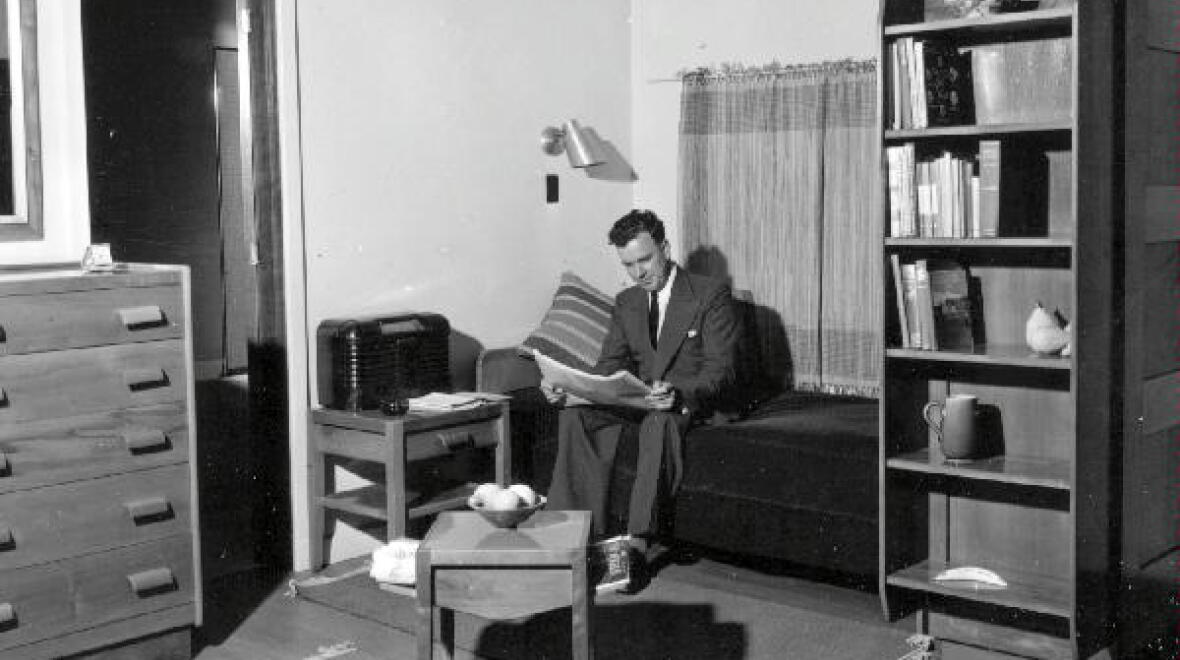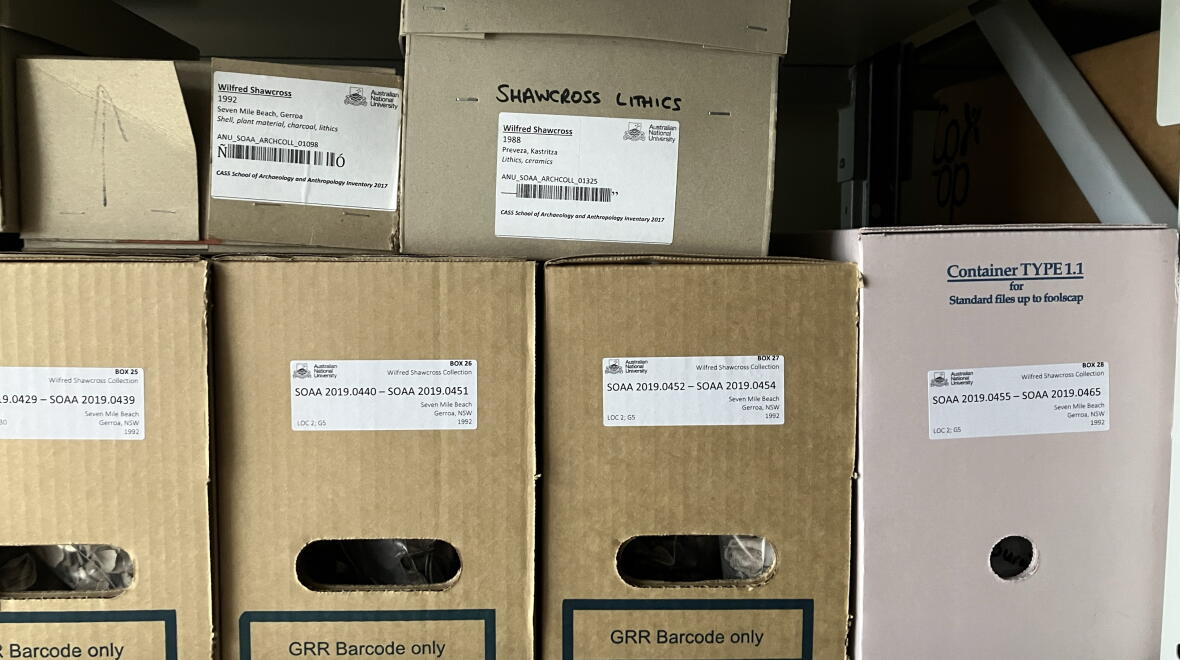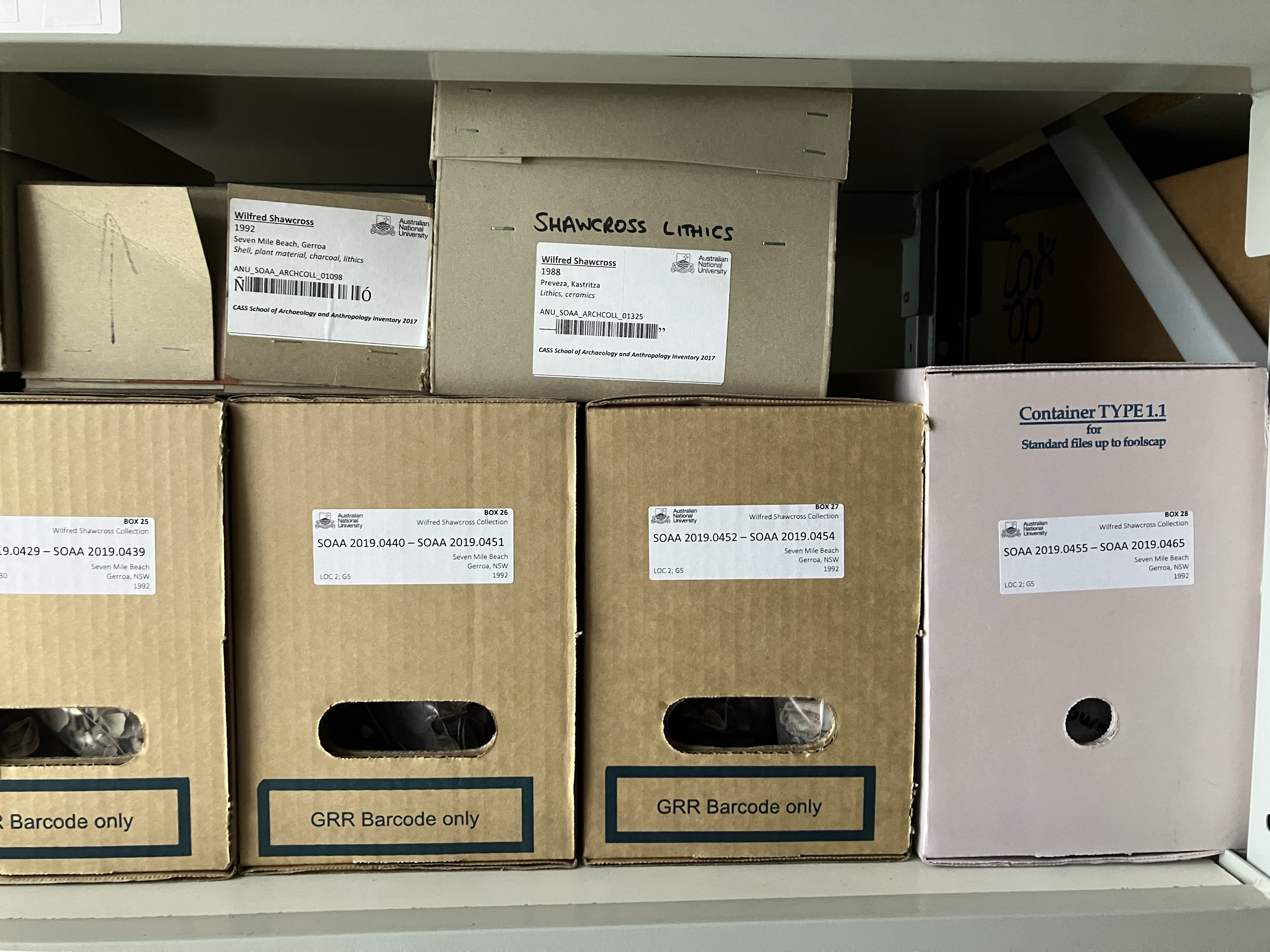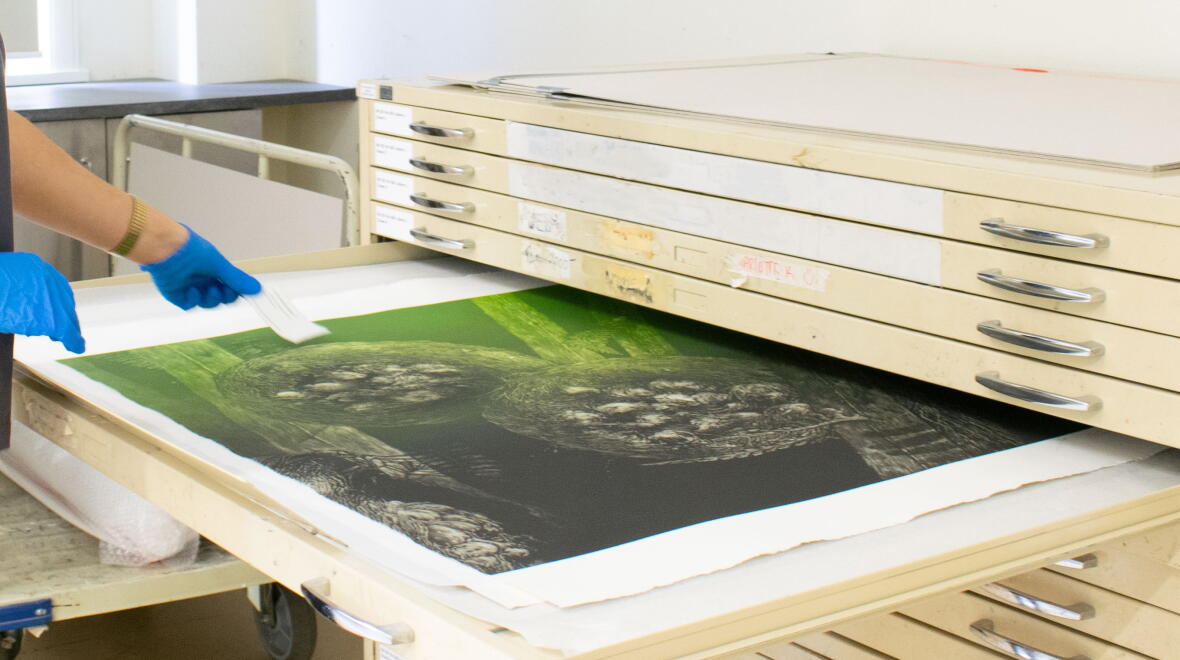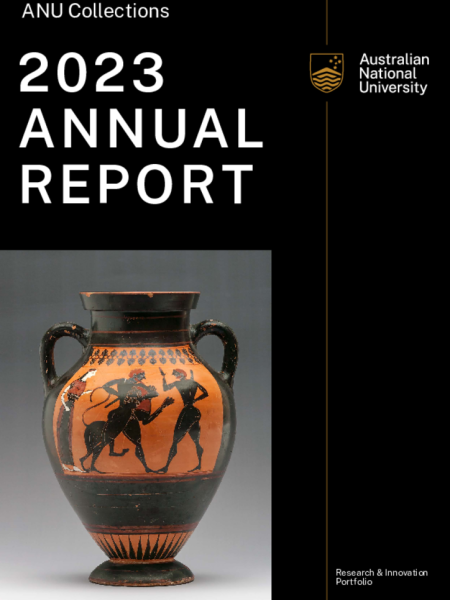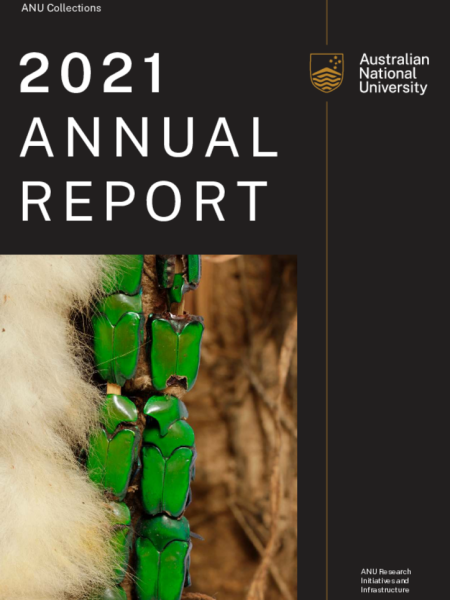
About our collections
The ANU holds more than 50 specialist research, teaching and heritage collections – including Aboriginal and Torres Strait Islander objects and cultural material, as well as cultural material from Asia and the Pacific, and West African regions, artworks, antiquities, a herbarium, geological and archaeological samples, biological specimens, scientific instruments, mid-century furniture and a wood library.
When curated and discoverable, these collections can be reimagined and actively built upon by researchers, students and communities to allow for complex, multidisciplinary research and teaching.
Our vision is to curate our collections and make them available as research and teaching infrastructure to support the academic community with complex, multidisciplinary research, teaching and learning, and to actively recognise and embed First Nations sovereignty into our collection practices.
The ANU is committed to truth-telling around its collections and supporting the empowerment and self-determination of communities in their leadership, protection and management of Ancestors, cultural objects and material.
ANU Design Unit Furniture Collection
FACILITIES AND SERVICES
The ANU Design Unit Furniture Collection is a working collection of mid-century modernist furniture. The Collection was designed between 1954 – 1977 by the ANU Design Unit – a majority of the pieces were manufactured locally, with select pieces crafted by members of the Design Unit such as Hans Pillig. Many of the pieces are attributed to renowned Australian designers Fred Ward and Derek Wrigley. The Collection has local and national significance as an important example of integrated Australian mid-century design. Globally it is the only known example of furniture designed in-house by a university design unit. The collection demonstrates the value of ‘total design’ awareness and the commitment to excellence from the University’s inception.
ANU Xylarium Collection
COLLEGE OF SCIENCE
The ANU Xylarium is one of Australia’s only actively curated wood collections. From the first samples collected in 1926 for wood identification, science and teaching, the Collection has expanded rapidly and now includes wood samples from Australia and overseas, prepared microscopic glass slides, timber blocks and physical index cards that are central to wood identification. The Collection has strong research significance with the potential to contribute to work in wood anatomy, archaeology, anthropology, furniture and decorative arts conservation, art history and forensic science.
ANU Zooarchaeology and Zoology Collection
COLLEGE OF ARTS AND SOCIAL SCIENCES, COLLEGE OF ASIA AND THE PACIFIC, COLLEGE OF SCIENCE
The ANU Zooarchaeology and Zoology Collection is a collection of mammal, bird, reptile, fish and invertebrate (shellfish) specimens. The Collection contains skeletal, skin and spirit specimens of native Australian, common domesticated and introduced fauna, and a variety of species from across Southeast Asian and Pacific regions. The Collection is pivotal to the teaching and research activities of several archaeology sub-disciplines, including zooarchaeology, taxonomy, zoology, taphonomy, palaeobiology and human environments.
A number of 3D models of bones from this collection are available to view on the Skullbook Digital Bone Library.
Asia Pacific Maps Collection
SCHOLARLY INFORMATION SERVICES
The Asia Pacific Maps Collection is made up of more than 40,000 topographic, cadastral, aeronautical, tectonic, thematic and tourist maps and bathymetric charts. The Collection covers the world, with emphasis on Asia, Australia and the Pacific. The Collection is the largest University-held Asia Pacific map collection in Australia, with holdings that compliment those of the National Library of Australia. Through digitisation work and material archiving, the Collection serves as a primary repository for the University’s rich past and is a resource for current and future research and teaching across disciplines and regions. View the collection of digitised maps here.
Australasian Pollen and Spore Collection
COLLEGE OF ASIA AND THE PACIFIC
The Australasian Pollen and Spore Collection, originating from 1966, is the largest collection of modern pollen and spores from the Australasian and Pacific region, amounting to over 15,000 specimens. This Collection utilises the unique morphologies of pollen and spores to identify plants to various taxonomic levels. This scientific reference Collection is used as a comparative tool by researchers worldwide, playing a major role in attracting funding for several research projects in fields such as palaeo-environmental research, respiratory health and allergens, and the geographical origin of honey. The online catalogue of the Collection is freely accessible via apsa.anu.edu.au. Over the years, the Collection also inspired artists who created sculptures and prints reflecting the shapes and morphologies of pollen grains.
Biological Anthropology Collection
COLLEGE OF ARTS AND SOCIAL SCIENCES
The Biological Anthropology Collection consists of casts and skeletal specimens that represent human and non-human primates. This Collection is a source of biological and anatomical data and information about human and hominin skeletal variation and morphology that characterised humans and our ancestral species over the past 8 million years. This Collection is significant, as it is actively used in research and teaching within Bioarchaeology, Skeletal Biology, Forensic Anthropology, Palaeoanthropology and Primate and Hominid Palaeobiology.
CAP Art and Artefacts Collection
COLLEGE OF ASIA AND THE PACIFIC
The College of Asia and the Pacific’s Art and Artefact Collection contains significant cultural material from Australia, Asia and the Pacific, and forms an important record of the College's research activities. As a foundational school of the University, the provenance of the Collection represents historical continuity and connection to the University’s commitment to engagement with Asia and the Pacific. Many of these items are of great aesthetic, cultural and spiritual significance with some objects no longer produced by the cultures of origin.
China in the World Art Collection
COLLEGE OF ASIA AND THE PACIFIC
The Australian Centre on China in the World (CiW) Art Collection has a high degree of artistic and aesthetic significance and houses diverse works including glass, photography, prints, furniture, maps, posters, calligraphy and sculptures. Displayed throughout the Centre, these pieces were selected to complement the award-winning architectural design of the building. As the hub for China studies at the ANU, CiW aims to foster cross-campus, national and international research collaborations that promote greater understanding of the Chinese world – the People’s Republic of China, Taiwan, and the Chinese diaspora. The CiW Art Collection aims to further strengthen this connection through the support of arts and culture relating to China and its region.
ANU Classics Museum Collection
COLLEGE OF ARTS AND SOCIAL SCIENCES
The ANU Classics Museum, established in 1962, displays a range of items that provide fascinating insights into the cultural practices of the ancient Greek and Roman worlds. The collection, which is open to the public, spans the Mediterranean and beyond. It features examples of ancient art and objects of daily life from Greece and the Roman world, including Egypt and the Near East. The museum's areas of strength include domestic items, writing and commemoration, southern Italian pottery, and drama. The full museum catalogue is available online.
Historic Keyboard Collection
COLLEGE OF ARTS AND SOCIAL SCIENCES
The Historic Keyboard Collection is a unique collection of period instruments as well as custom-built copies of historical instruments, which includes: a clavichord, three harpsichords, and numerous square, upright and grand pianos. The collection also includes two organs, and a Mellotron M400. The Collection has strong historic significance due to its connection to the cultural history of Australia, the ACT and the many people who established the Keyboard Institute at ANU. This collection has a high degree of research significance as the instruments are played and studied by students at the School, as per the original intention, as well as by visiting artists. Collection highlights are available to view online.
Isabel McBryde Collection
COLLEGE OF ARTS AND SOCIAL SCIENCES
The Isabel McBryde Collection is a collection of archaeological material held by the School of Archaeology and Anthropology. McBryde was a highly respected academic at ANU for twenty years and is best known for her work on exchange networks, her promotion of Indigenous heritage and her influence in training a generation of Australian archaeologists. The Collection holds a high level of historical significance due to its association with one of the Australia’s foremost archaeologists. The collection contains a highly significant assemblage from McBryde’s Victorian Greenstone Project, as well as excavated material and the associated documentation from other sites across Victoria, ACT and South Australia.
John Mulvaney Collection
COLLEGE OF ARTS AND SOCIAL SCIENCES
The John Mulvaney Collection consists of archaeological material acquired by pioneering Australian archaeologist, John Mulvaney. The Collection contains material from some of the most important and influential excavations Mulvaney conducted and was associated with. The Collection holds historical significance to the ANU due to Mulvaney’s long association with the University and his position as Foundation Professor of Prehistory in the Arts Faculty. Of particular significance is the Mungo Peel, which is one of three latex stratigraphic peels taken by Mulvaney and shows the section of a trench wall exposed by the excavations at Lake Mungo in 1974.
Mary Jane Mountain Collection
COLLEGE OF ARTS AND SOCIAL SCIENCES
The Mary Jane Mountain Collection consists of archaeological and research material from Dr Mary Jane Mountain, an archaeologist who has been associated with the ANU since 1979. Mountain’s primary research contribution is her work at the Nombe Rock Shelter in the Highlands of Papua New Guinea and the collection contains the complete assemblages of material collected from this site across four excavation seasons. This Collection has high research significance and contains archaeological evidence for: continuous human activity at the site from the early-mid Holocene; Episodic human occupation during the Pleistocene (dating back to c. 25,000 cal BP); and Human interaction with multiple species of extinct megafauna, including three new species only documented at this site.
ANU Meteorite and Tektite Collection
The Meteorite and Tektite Collection comprises over 300 meteorites and 450 tektites. This collection contains large meteorite masses, meteoritic dust and polished thin sections from as early as the 1700s, and has representatives of chondrites, achondrites, iron meteorites, and stony-iron meteorites. The tektites are all Australites from the strewn fields in and around Oodnadatta, South Australia. A significant portion of this Collection was obtained by Professor John Lovering AO FAA FTSE. The Collection is a significant repository of scientific value for researchers to contribute to the scientific understanding of our universe and how planets are formed.
Mount Stromlo Photographic Plates Collection
COLLEGE OF SCIENCE
The Mount Stromlo Photographic Plates Collection consists of several thousand glass plate negatives. These images are some of the oldest of the Southern night sky, starting in the 1920s and are historically connected to Mount Stromlo Observatory’s history of astronomy. The Collection includes negatives taken by notable astronomers such as Professor Jeremy Mould, Ken Freeman, Bart Bok and Gerard de Vaoucoulers. Other photographic plates are associated with high profile astronomy research programs. For example, the MACHO project involves the search for dark matter which includes one of the first detections of a planet orbiting another star, measurements of the Magellanic Clouds, measuring the size of the Universe and the rotation of galaxies, and even tracking the first satellites put in orbit. This Collection holds a wealth of scientific data and research potential – most notably, presenting a historical baseline to allow for looking at long-term changes in astrophysical objects such as exploding stars or moving objects in our solar system – while also maintaining a powerful connection to a historical site of local and national significance.
New Guinea Collection
COLLEGE OF ARTS AND SOCIAL SCIENCES
The School of Archaeology and Anthropology’s New Guinea Collection is of historical and scientific significance as a representation of early anthropological and archaeological research in New Guinea and surrounding regions. It consists of 1,040 objects collected in the 1950s and 1960s, primarily from the Papua New Guinea (PNG) Highlands, as well as PNG’s New Ireland province, Baliem Valley and Bokondini in Papua, Indonesia and a small amount of material from the Torres Strait. The Collection contains material from leading figures in the emergence of both disciplines in the region, including Marie Reay, Ralph Bulmer, R.M. Glasse and John Barnes in Anthropology, and Sue Bulmer in Archaeology. The Collection provides opportunities for new research on the material culture of the region and opportunities for collaboration with Indigenous groups and independent Pacific Island nations. Highlights from this collection are featured on the School of Archaeology and Anthropology Collections website.
Research School of Earth Sciences (RSES) Collection
The RSES Collection consists of rocks, minerals and fossils that have been collected by and for the Research School of Earth Sciences and the former Geology Department. The collection is of scientific and research significance as a major repository of material useful to the fields of paleontology, mineralogy, petrology, cosmochemistry, geochemistry, biogeochemistry and palaeoenvironments. The Collection continues to be used in publications and by researchers utilizing techniques such as MicroCT scanning and 3D modelling. The Collection is also used by researchers at other universities, museums and government agencies working in the field of earth sciences.
Seed Collection
COLLEGE OF ASIA AND THE PACIFIC
The Archaeology and Natural History (ANH) Seed Collection is a scientific reference collection of seeds and nuts from the Australasian and Pacific region, amounting to approximately 850 specimens. Many specimens were collected by researchers, while other samples are herbarium specimens or were purchased and/or donated from external organisations in Australia. The Collection includes samples from upwards of 30 countries. This Collection utilises the specific characteristics of seeds to identify the plant origin and potential use of seeds and nuts found in archaeological excavations and in environmental archives. Comparative collections like this one are a critical tool for archaeobotanical, (palaeo)ecological and agricultural research. The Collection is currently being digitised.
SoAA Art and Objects Collection
COLLEGE OF ARTS AND SOCIAL SCIENCES
The School of Archaeology and Anthropology Art and Objects Collection contains 320 artworks and artefacts which have been acquired by the School since the early 1970s. The Collection contains a diverse array of artworks and objects, including a collection of early Papunya Tula paintings, WEH Stanner’s collection of Nym Bandak Masonite board paintings, a collection of Warlpiri shields presented to the school by Gough Whitlam, a collection of Indian wax casting tools and a donated collection of classical antiquities. The collection reflects the evolving teaching and research priorities of the school throughout its history. Highlights from this collection are featured on the School of Archaeology and Anthropology Collections website.
Tikopia Collection
COLLEGE OF ARTS AND SOCIAL SCIENCES
The Tikopia Collection consists of approximately 550 cultural objects collected by James Spillius from the Island of Tikopia, Solomon Islands in 1952 and 1953. These objects include wooden bowls, headrests, tapa beaters and clubs, palm leaf mats, fishing equipment, weaving equipment and shell adze blades. This Collection provides research opportunities on material culture of the Western Pacific, the history of the Collection and the collectors, the ethics and contemporary significance of material culture collections and on developing collection management practices in consultation with independent Pacific Island nations. Highlights from this collection are featured on the School of Archaeology and Anthropology Collections website.
University House Heritage Collection
UNIVERSITY HOUSE & FACILITIES AND SERVICES
The University House Heritage Collection comprises 4000 pieces of bespoke mid-century furniture. This collection was designed and commissioned specifically for University House by Fred Ward between 1949 – 1953. In 2022 a small sub-collection of memorabilia associated with the history of the House was included. The collection has a high-level of historic significance to the University as it was one of the first planned buildings and consequently is an integral part of the University’s design history. As well as displaying the work of notable Australian designer Fred Ward, the collection also features Australian entrepreneurs and textile artists Catherine Hardress (also known as Catherine Hardess) and Edith Grove. University House is an outstanding example of mid-century, integrated design.
Wilfred Shawcross Collection
COLLEGE OF ARTS AND SOCIAL SCIENCES
The Wilfred Shawcross Collection is a collection of archaeological, photographic and research material collected by Wilfred Shawcross who held various teaching and research positions at the ANU between 1973 and 1993. The archaeological material is from a 1992 Gerroa Field School, and has research potential for an archaeologist studying Indigenous occupation patterns along the south coast of New South Wales. The photographic, archival and research material has strong historic significance, recording the University’s involvement in key archaeological research at Lake Mungo, as well as the history of teaching in the Archaeology Department.
ANU School of Art & Design Collection
COLLEGE OF ARTS AND SOCIAL SCIENCES
The School of Art & Design Collection holds over 1000 objects comprising ceramics, glass, jewellery, gold & silversmithing, painting, photography, printmaking, bookbinding, typesetting & sculpture. Most of the Collection is made up of donated artworks from an extensive list of staff, students, visiting artists and H.C. Coombs Creative Arts Fellows since the establishment of the Canberra School of Art in 1976, many of whose artistic achievements are of national and international significance.
You may also like
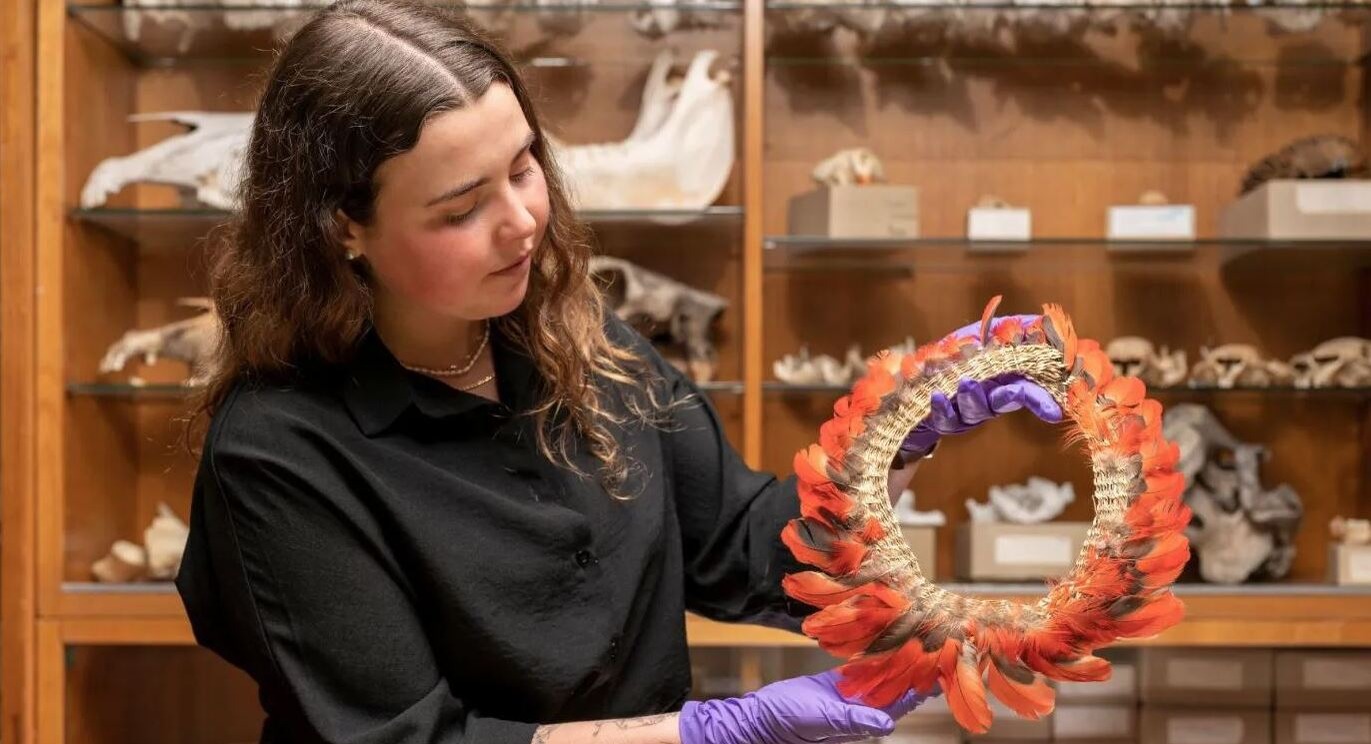
Preserving the past: the incredible items in ANU Collections
Spanning continents and centuries, the items in the ANU Collections offer a glimpse into the past, while also providing a valuable resource for research and teaching.
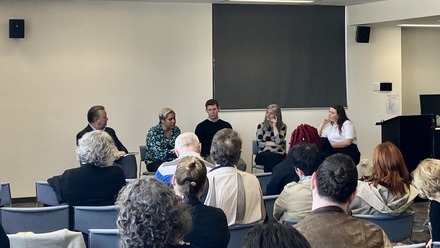
How university sector can advance collections and research
University collections - cultural material, specimens, data and archival records - are a by-product of research, teaching and of our interactions with communities across Australia and the globe.
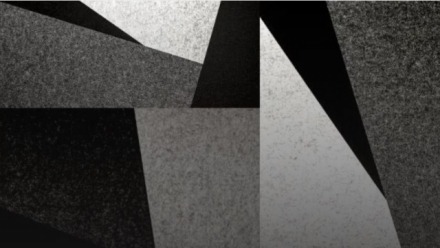
Recognising the potential of university collections as research infrastructure
The 18th of May is International Museums Day (IMD), which, in 2024, focuses on the potential for museums and collections to unlock knowledge.





